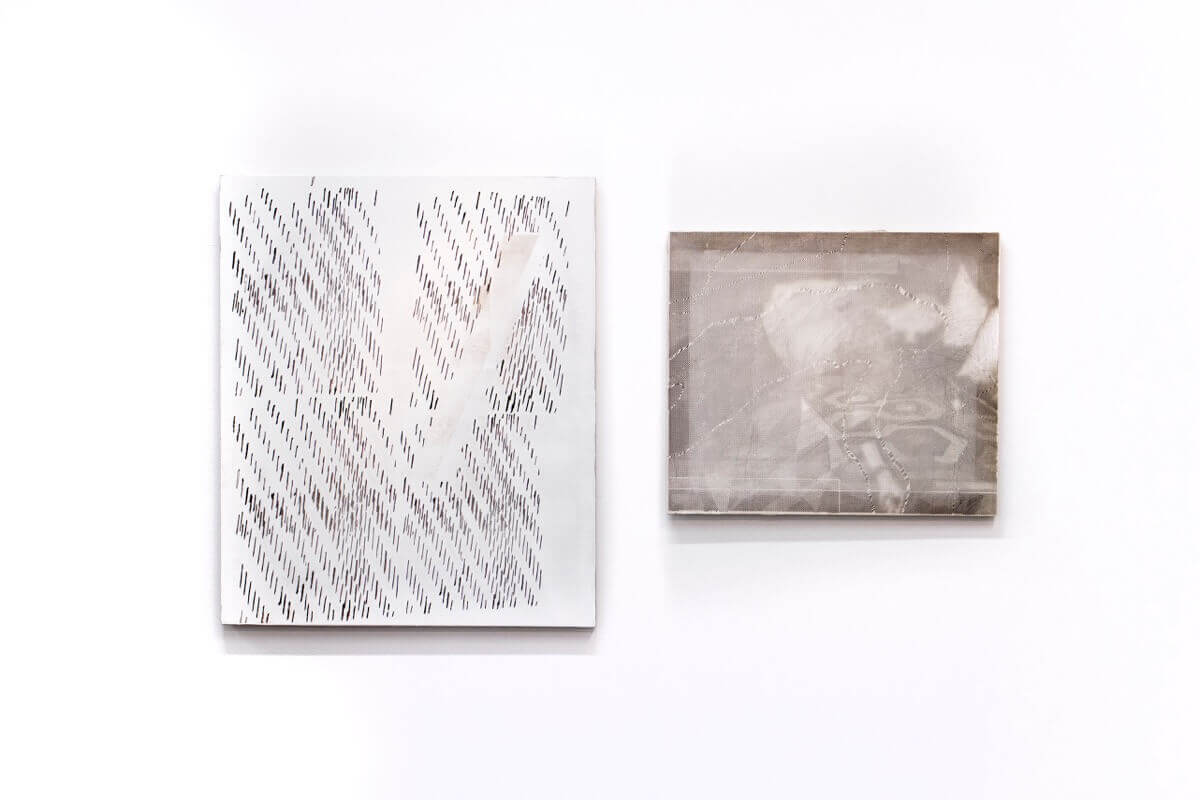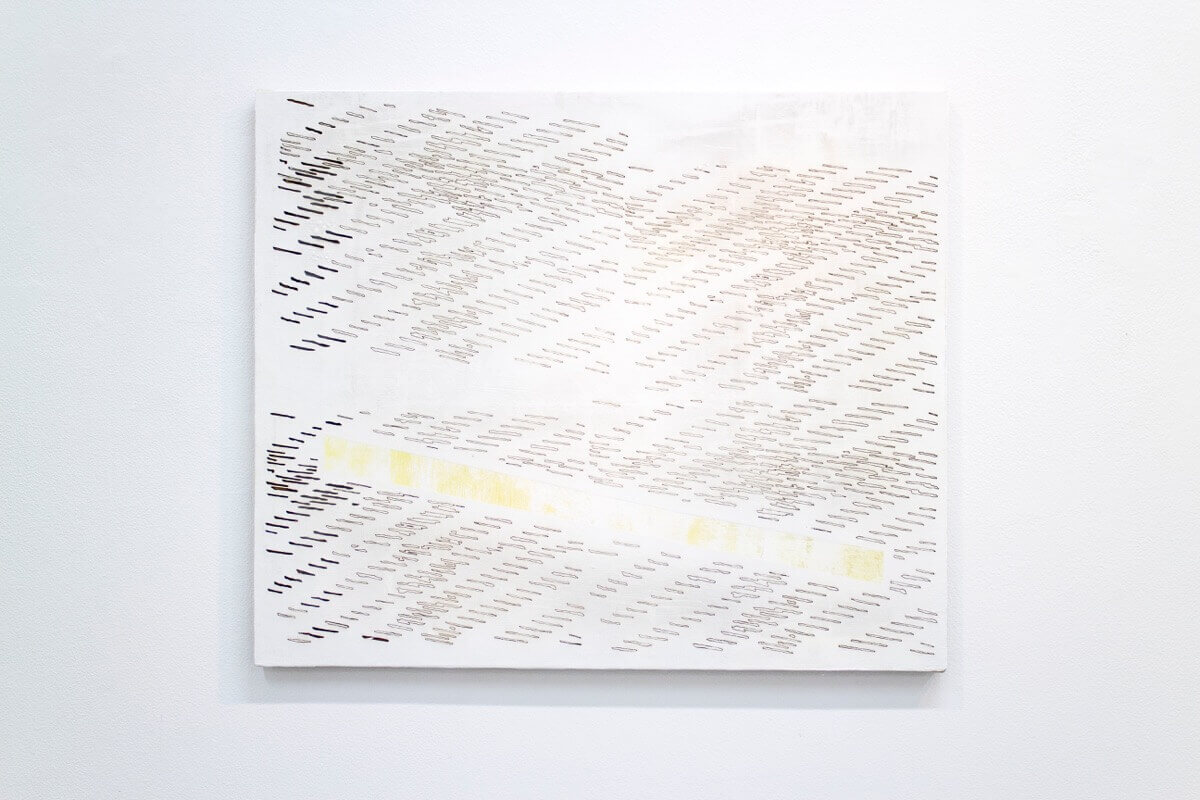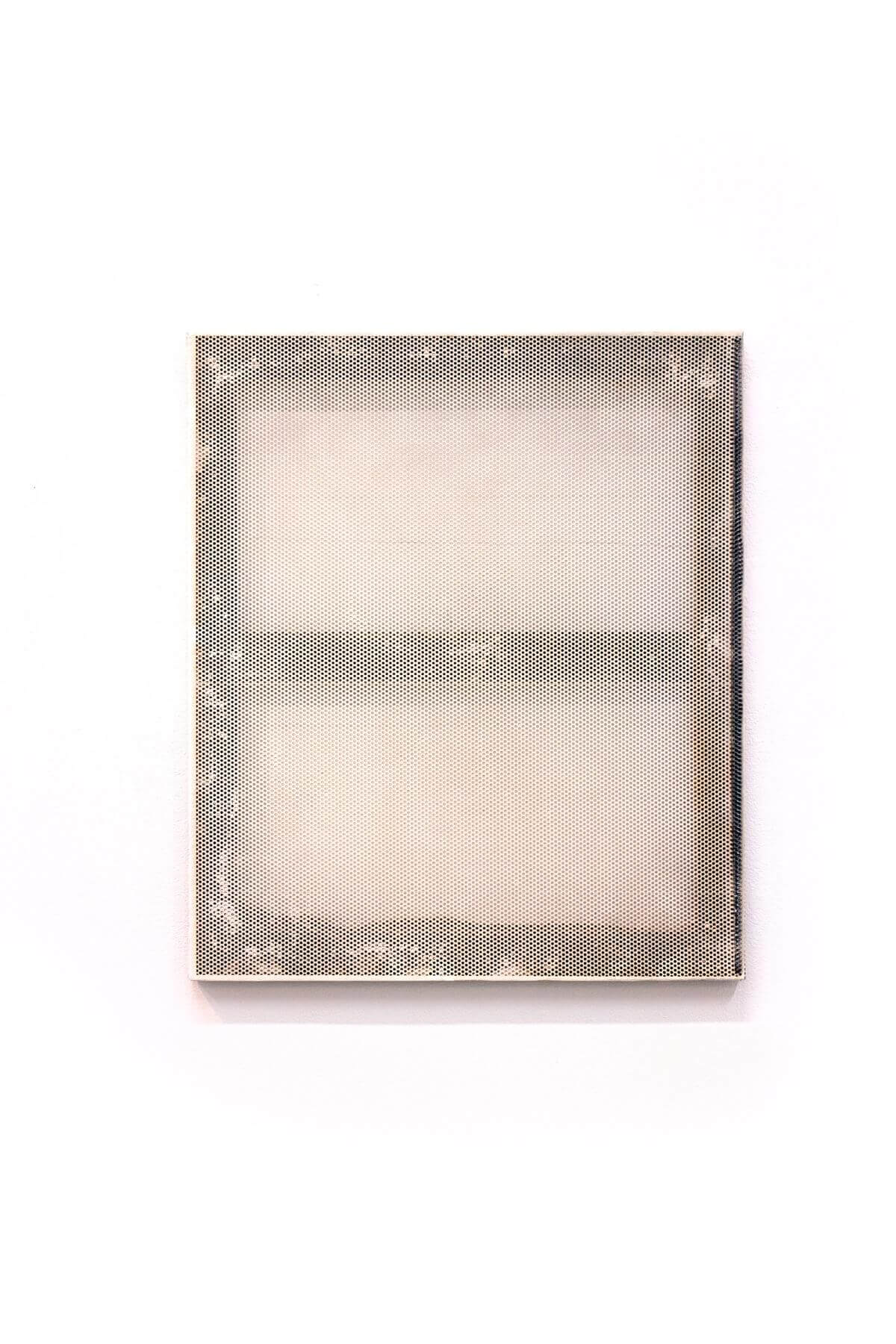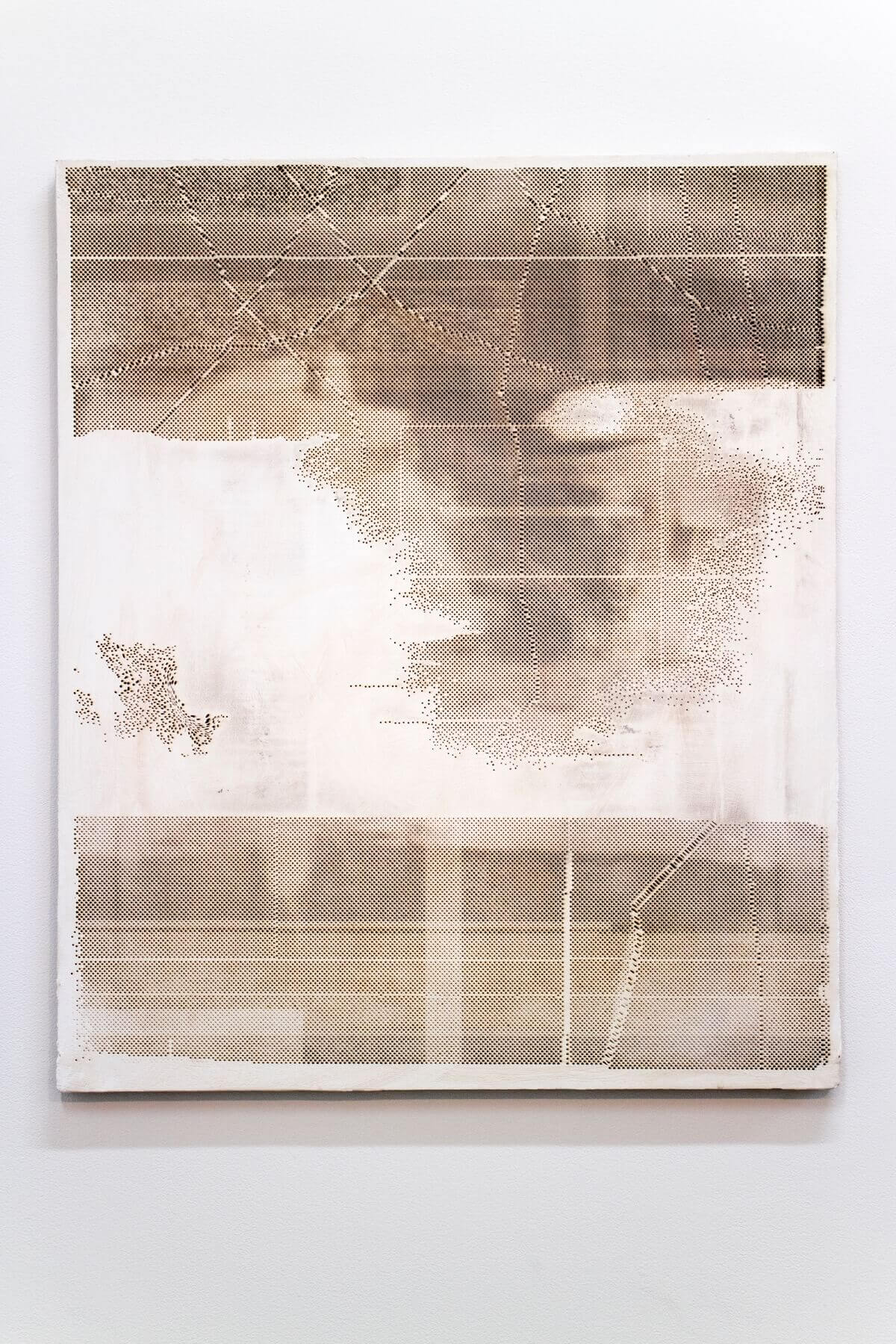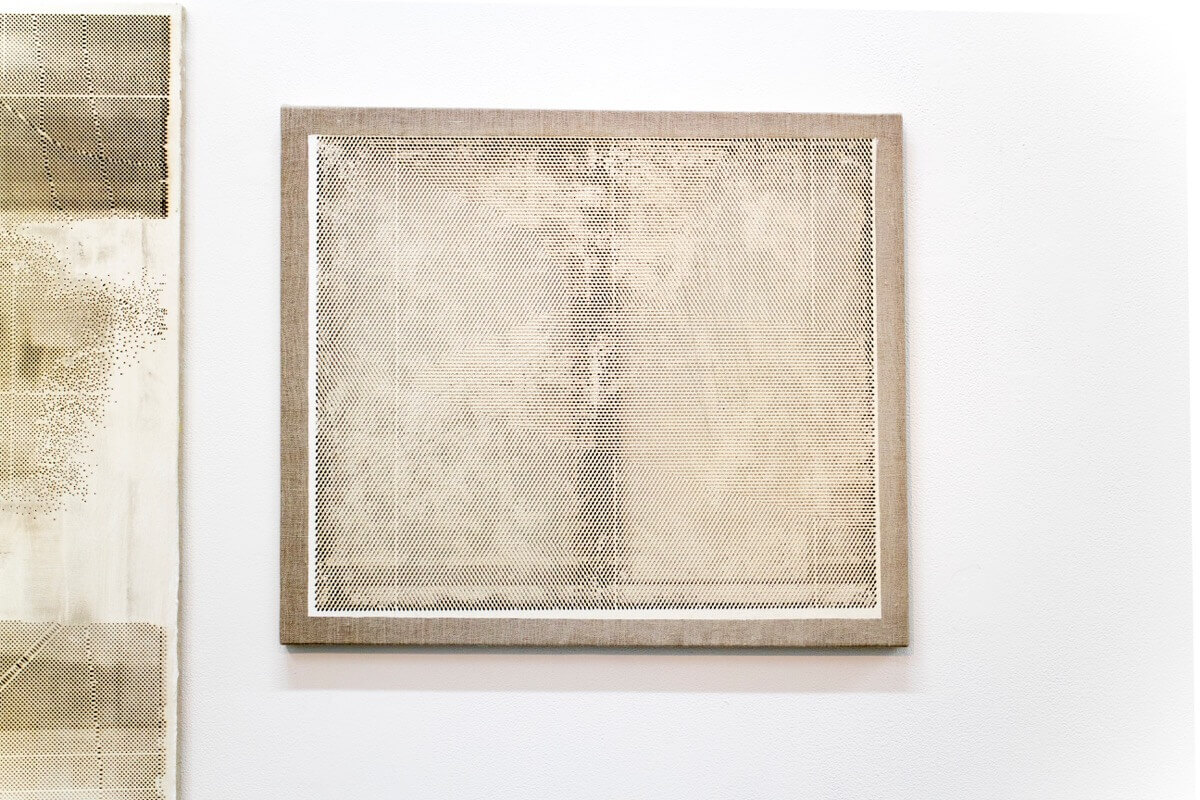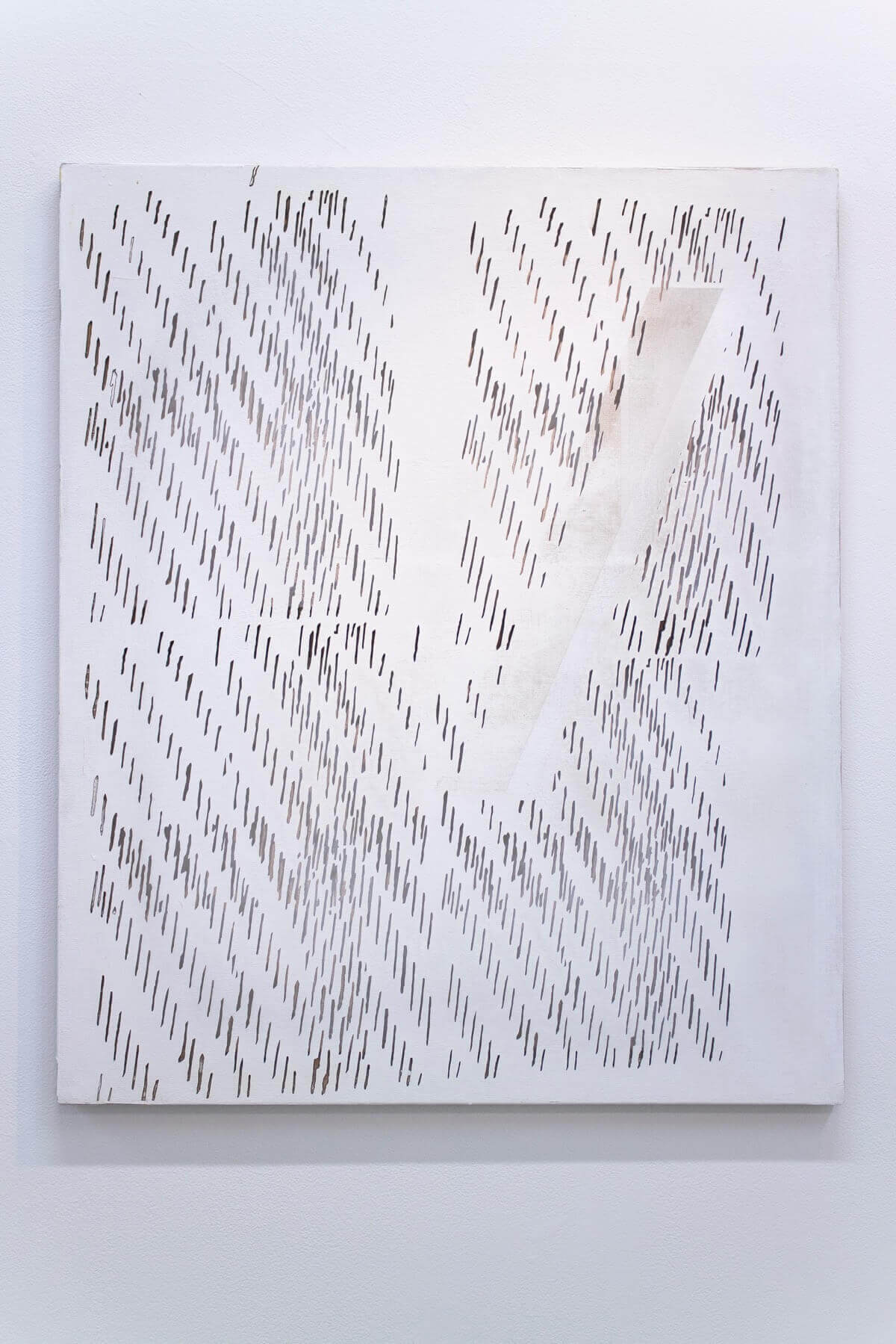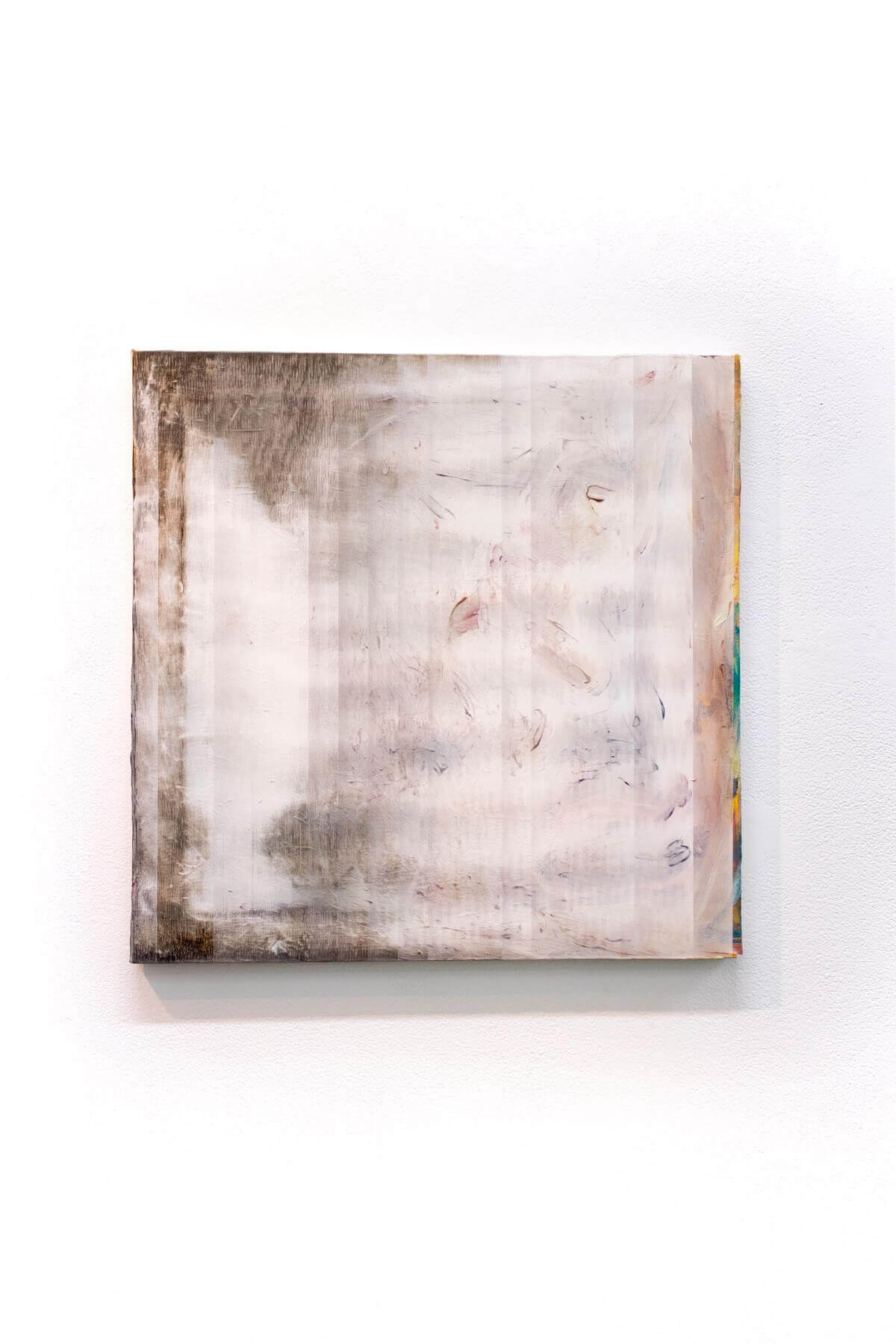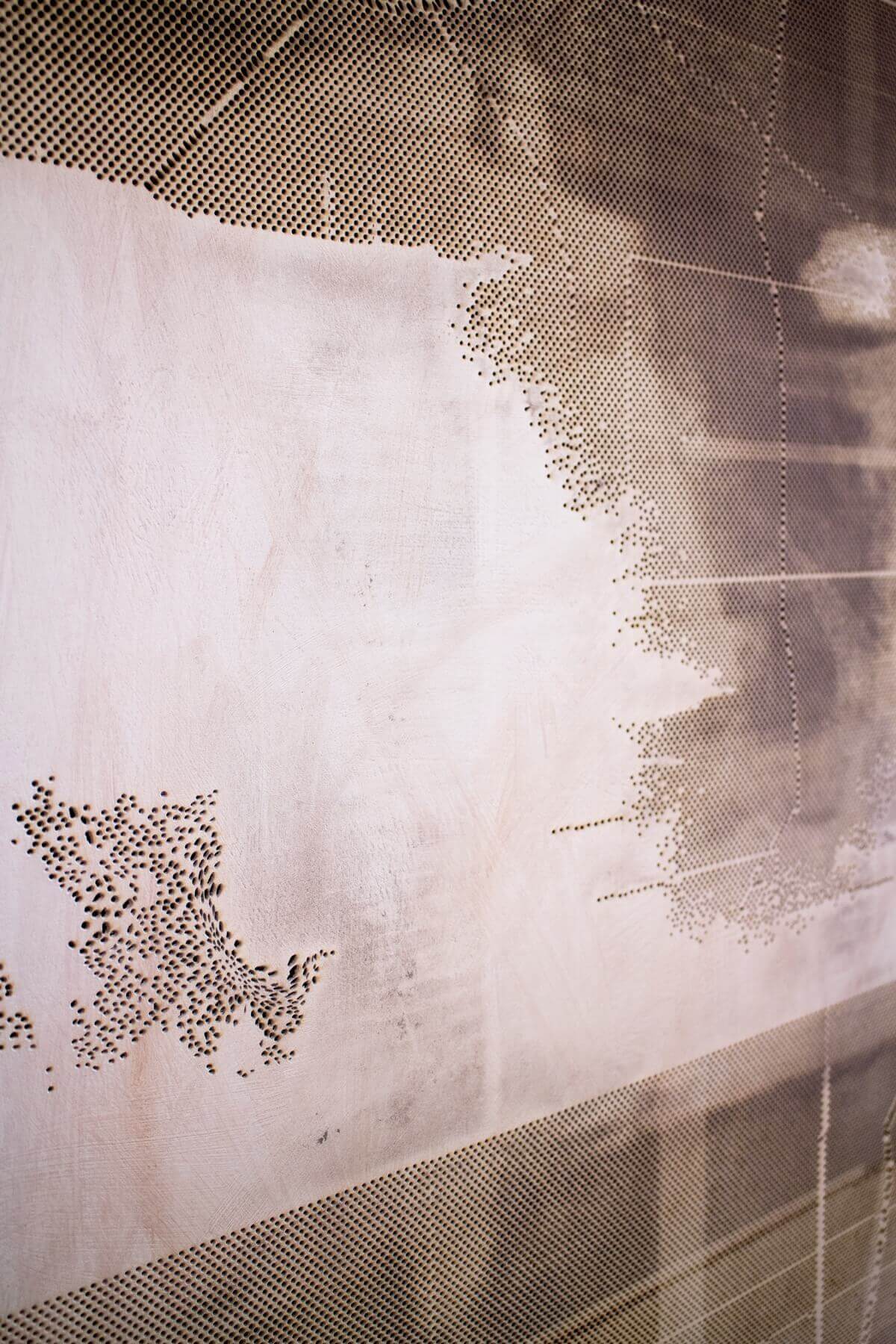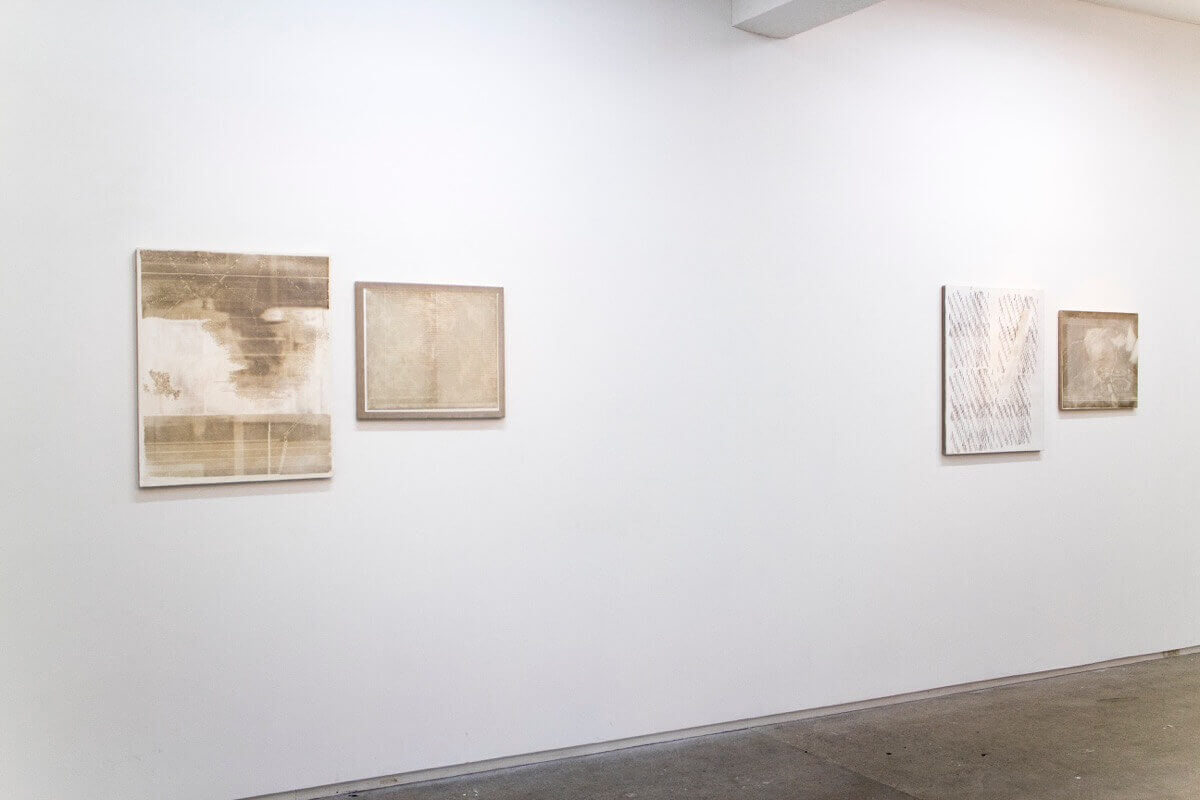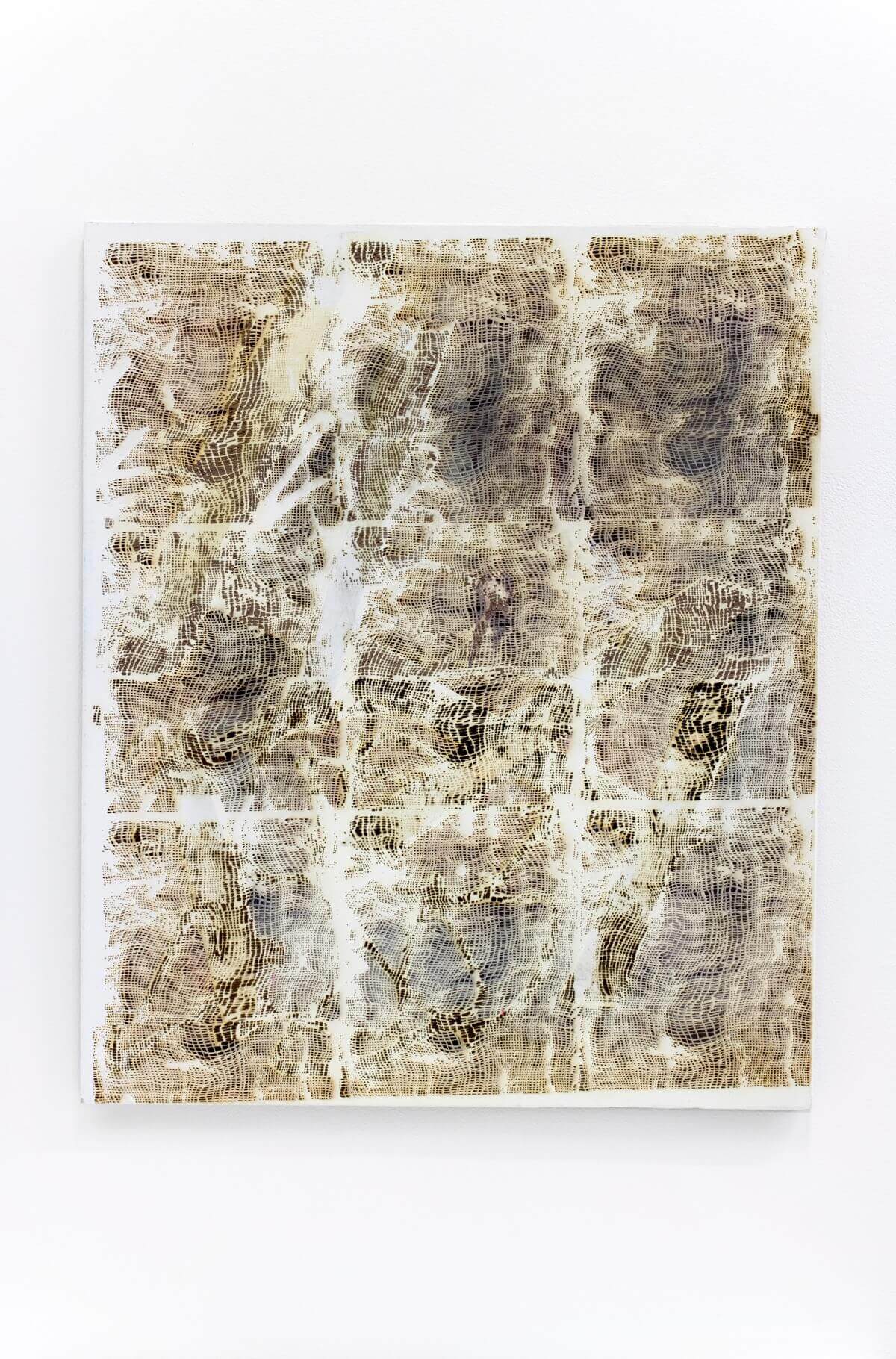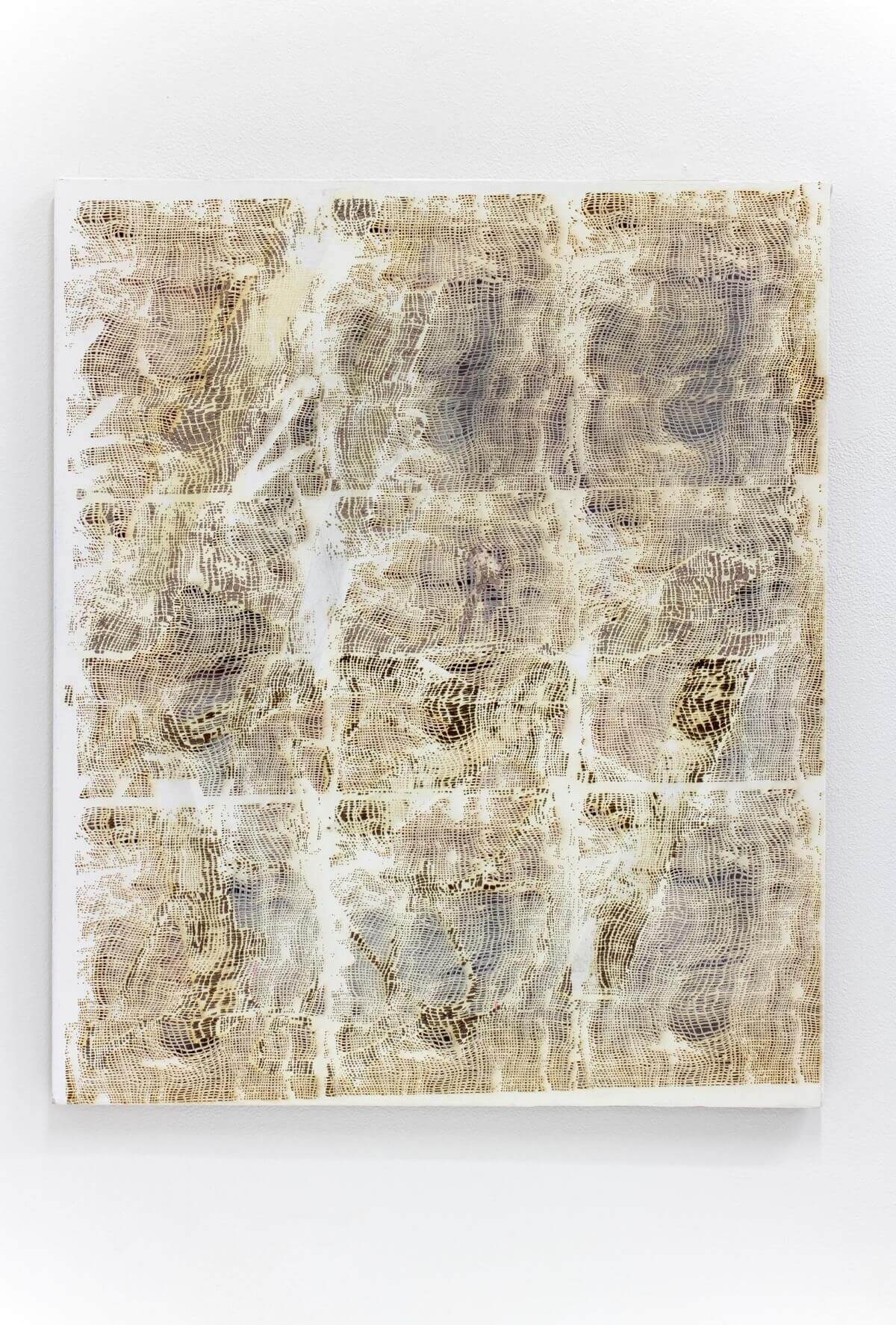服部憲明 Noriaki Hattori |Temporary Correctness

服部憲明 Noriaki Hattori |Temporary Correctness
2014 年 3 月 22(土)—5 月 2 日(金)
[オープニングレセプション]初日 18ー20時
Artist’s Statement
我々を取り巻く情報の根本的な性質の変化を反映させながら、ペインティングの提供する視覚経験の特異な性質(鑑賞者に内在する不安定で壊れやすい記憶や感情に不条理な連鎖を与える)は、人の意識の内部において自己形成の土台となるのみならず、外部の出来事に対するより本能的な身体反応の機会として 、現代社会の中で ますます欠く事ので きない、基盤的な作用となりつつあるように思える 。この視覚体験の役割を軸に 、 ペ インティング が 扱うことが 可能な領域をイメー ジ 編集の体系として演算可能な言語的なものとして位置づけることで、固有に扱うべき非言語(感性)的な領域を仕分けすることに興味が ある。言い換えれば 、制作行為を通して解決すべ き一連の問題系の枠と は 、「 ペ インティングの現在を可能にしたものを解析/演算し、ペインティングの現在が可能にするものを提示すること」である。
4つの行程(イメージの下加工、データの編集、出力素材の加工、出力)に分解されたペインティングのプロセスは、イメージのデータ、素材の加工手順や加工機の設定情報のアーカイブにより、おおよその再現性が担保される。そして、出力素材のもつ偶発的な物質量のボラティリティは、再現性の高いツール(digital fabrication)の仲介により、表層に残るノイズとして変換される。結果としてそこで目にするものは、制御されつつある自発性(ノイズ)と、再現性の高いツールがもたらす非再現的な自発性(ノイズ)との接点であり、そこでは作品の物質的なフレームは、本来的には相容れないもの同士が一時的に折り合いをつける場として機能する。
これらの行程の背後にあるのは、ペインティングとは所詮ツールとその設定、さらには特定の初期環境(キャンバスサイズ、そして最初に与えられる素材としてのイメージなど)の演算に過ぎないという仮説であり、ペインティングの行程は目的的なレベルまで詳細に分解され、プリセットされている身体性を動力としたツール群は、異なる分野のツールと代替される。結果としてもたらされるのは再現性といった新たなツールの性質であり、ひとたび同じ状況が与えられれば、主体がだれであれ、近似されたペインティングが加工可能になる。全体性を担保すべき権威が存在しない状況において、絵画の基準はいかにして決められるべきか、今回提示されているのはその一つの試みである。
服部憲明
My main interest rests on my hypothesis for the potential of painting’s visual experience when serving the profound role of connecting the viewer’s volatile and fragmentary memories and emotions. In my opinion, reflecting the radical shift of how we identify one’s self, this idiosyncratic nature of visual experience seems to become much more an essential function in contemporary society as not only a basis of self-awareness, but also one’s instinctive physical reaction towards an event in the outer world: this sensory life could form the platform to reach out to one’s externality.Taking this functional aspect of visual experience into consideration, I would like to sort out nonverbal sensitive realm which painting should treat peculiarly as a system of image editing. In other words, set of issues concerning the paintings to be solve is that “ to analyze what made painting’s today and to exhibit what today’s painting enable”.
Repeatability of the process of painting, divided into four phases( pre machining of image, date editing, processing of canvas and output), can be held as a nature of digital fabrication by archiving data of images, procedure of preparing canvas and configuration of fabricating equipment. And quantitative volatility of ground on canvas is transformed into remains on surface as spontaneous noise by intervention of high reproducible tool.
The things to see there is the threshold between spontaneous noise which is being controlled and no-reproductive noise form the reproductive tool . Material framework of paintings functions as a place where incompatibles are temporarily reconciled.
The idea behind this process of works is based on a practicable assumption that painting is no more than calculations of given environment, set of visual materials and effect of tools. The process of painting is divided into a particular level that each tools are clearly correspond to intended visual effect and set of basic tools for the painting based on physical movement are substituted for tools of industrial field.
Throught this intervention in tools palette, reproductivity, nature of substituted tool, is brought into a painting’s functional aspect. Once the same set of environment are given, approximate surface of painting could be processible. In the situation that authority is no longer able to assure collectiveness of painting, how universal and timeless criteria of painting could be judged. In this exhibition, a legitimate and alternative attempt is presented.

